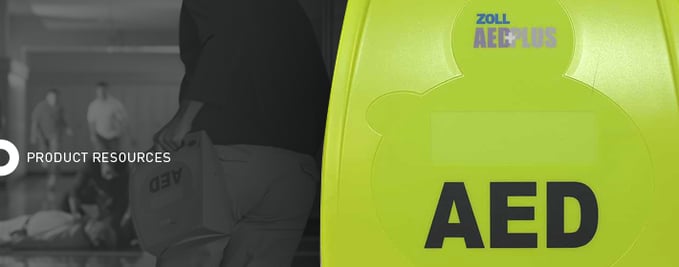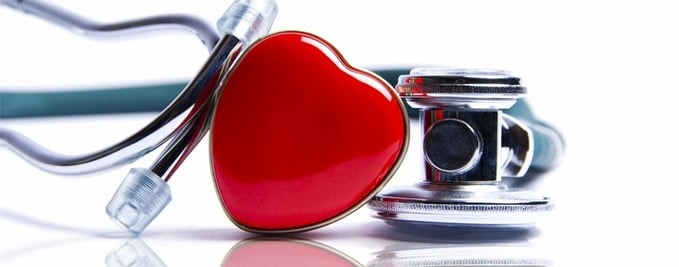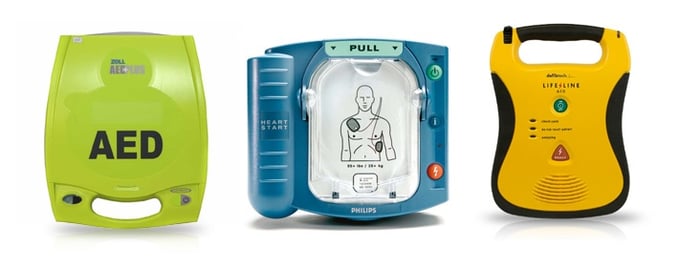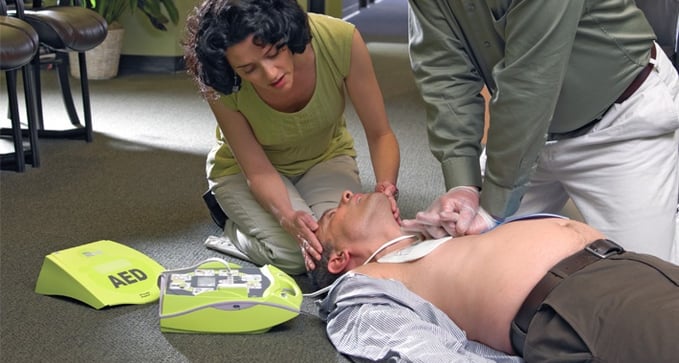What is an Automated External Defibrillator?

Automated External Defibrillators (AEDs) are portable devices that gauge heart rhythm. This device can transmit an electric shock to the heart to restore its regular rhythm. AEDs are primarily used to treat those suffering from sudden cardiac arrest. This occurs when the heart rapidly and unexpectedly stops functioning. The blood no longer flows to the brain and other organs unless stimulated with an AED. Sudden cardiac arrest can likely lead to death unless it is treated within minutes. The use of an AED on such an individual really can save his or her life. Since one of the causes of sudden cardiac arrest is over-exertion during physical activity, gym owners and employees should always be prepared, trained, and equipped to handle an emergency situation.
Understand the Heart to Understand an AED
The heart's internal electrical system controls the rhythm and rate of the heartbeat. Each beat transmits an electrical signal across the heart that spurs the heart's contraction and subsequent pumping of blood. Pumping occurs with each heartbeat.
Issues with the heart's electrical system can lead to an abnormal hearth rhythm referred to as arrhythmias. The heart beats too slow, too fast or in an irregular manner during an arrhythmia that can lead to cardiac arrest. Every type of arrhythmia can be overcome with an AED electric shock. In some cases, all it takes is a single shock from an AED to restore the heart's rhythm.
AED Ease of Use
Don't be afraid to use an AED. This is a battery-operated device that is light in weight and easy to use. Each AED has a set of instructions and some modern day AEDs even have voice commands to state if and when the heart should receive a shock. The user applies sticky pads containing sensors (electrodes) to the chest of the person suffering cardiac arrest. These sensors transmit data about the patient's heart rhythm to the computer within the device. The computer studies the heart rhythm to determine if an electric shock is necessary.
It certainly helps to take a CPR course, yet anyone can learn to use an AED without a professional instructor. Don't hesitate to use an AED to save a life in the event trained personnel are not around to help. You will likely find AEDs posted to walls at gyms, fitness facilities, public parks, malls, convention centers, sporting events, golf courses, hotels, schools and airports. You can even buy your own AED for use at home. If you're hesitant to use such a device in the event of cardiac arrest, consider the fact that Good Samaritan laws and the federal government's Federal Cardiac Arrest Survival Act protect untrained witnesses who attempt to help during emergencies. Those who own or manage facilities should train employees to use AEDs in the proper manner and regularly revisit this training to make sure everyone is up to date.
How to Proceed in the Event of a Cardiac Arrest
If someone in your vicinity is undergoing cardiac arrest, don't panic. Dial 9-1-1 immediately. If trained medical personnel are not on-site, an untrained individual should apply the AED. Check the individual's pulse and breathing to determine if the AED is necessary. If no one is sure how long the individual has been out or if there is no AED on-site, perform two straight minutes of mouth-to-mouth CPR.
An AED should be used as soon as it is opened and prepared or transmitted to the site where the victim is located. The AED can be used after CPR to check the individual's hearth rhythm and provide an additional shock. Just be sure to move the individual out of the way of puddles and other sources of water—the AED should be used in a dry space so there is no risk of injury when delivering shocks.

Dry the individual's chest and expose it so the AED's sticky pad sensors can contact the chest. Place a pad on the right center portion of the chest. The other pad should be placed below the opposing nipple. Once you are sure the sticky pads are properly connected to the skin, it is time to transmit the current. Make sure the defibrillator pads are a minimum of an inch away from any piercings or implanted devices. This space allows the electric current to move between the pads.
Turn on the power, follow the instructions, adhere to all the voice commands and follow the on-screen prompts. Double check the wires to ensure they are attached to the AED and clear people away from the individual in question. Press the AED button marked “analyze” and stand back. The AED will check the person's heart rhythm and instruct you as to whether a shock should be delivered. Resume or commence CPR until emergency medical personnel arrive. If the individual begins to move, you can halt CPR. Stick with him or her until the professional medical technicians arrive.
Related Content:
Empower your staff and reassure your community with our FREE downloadable cleaning and disinfecting guides for fitness centers, educational settings, hospitality facilities and more.
Topics from this blog: Product Resources
Back





